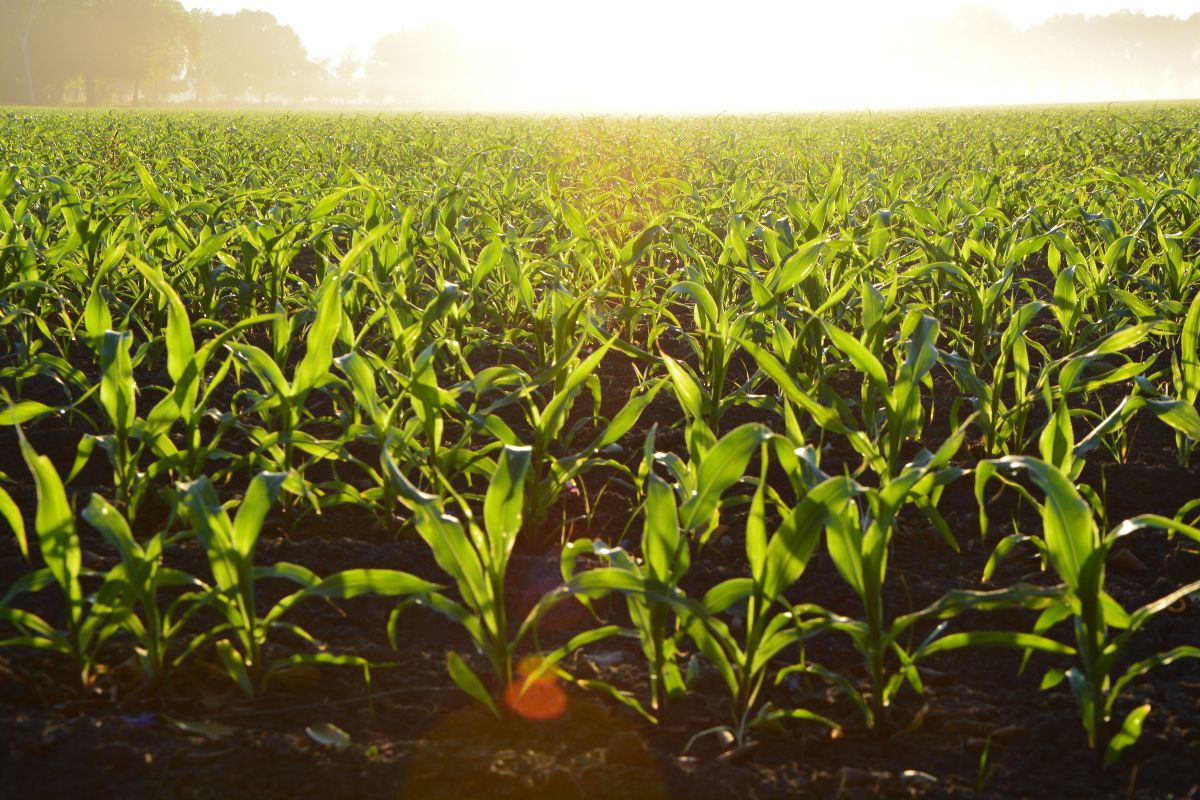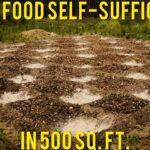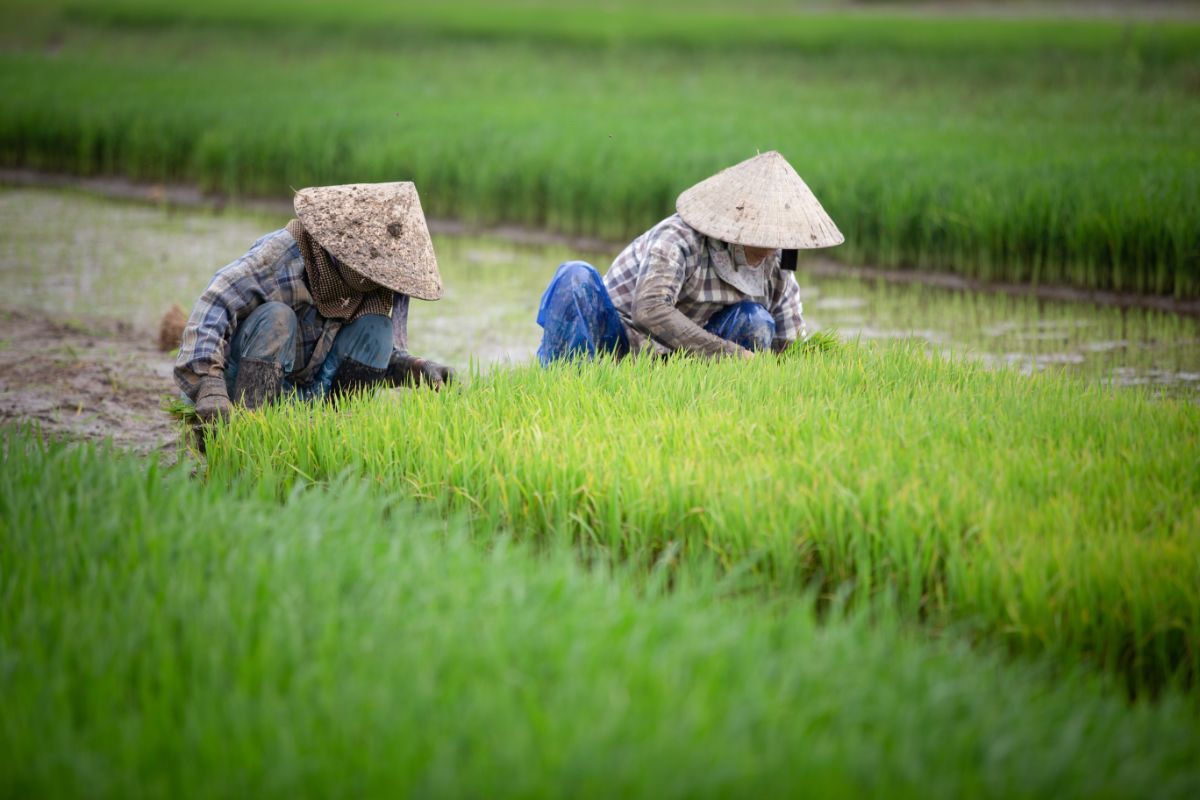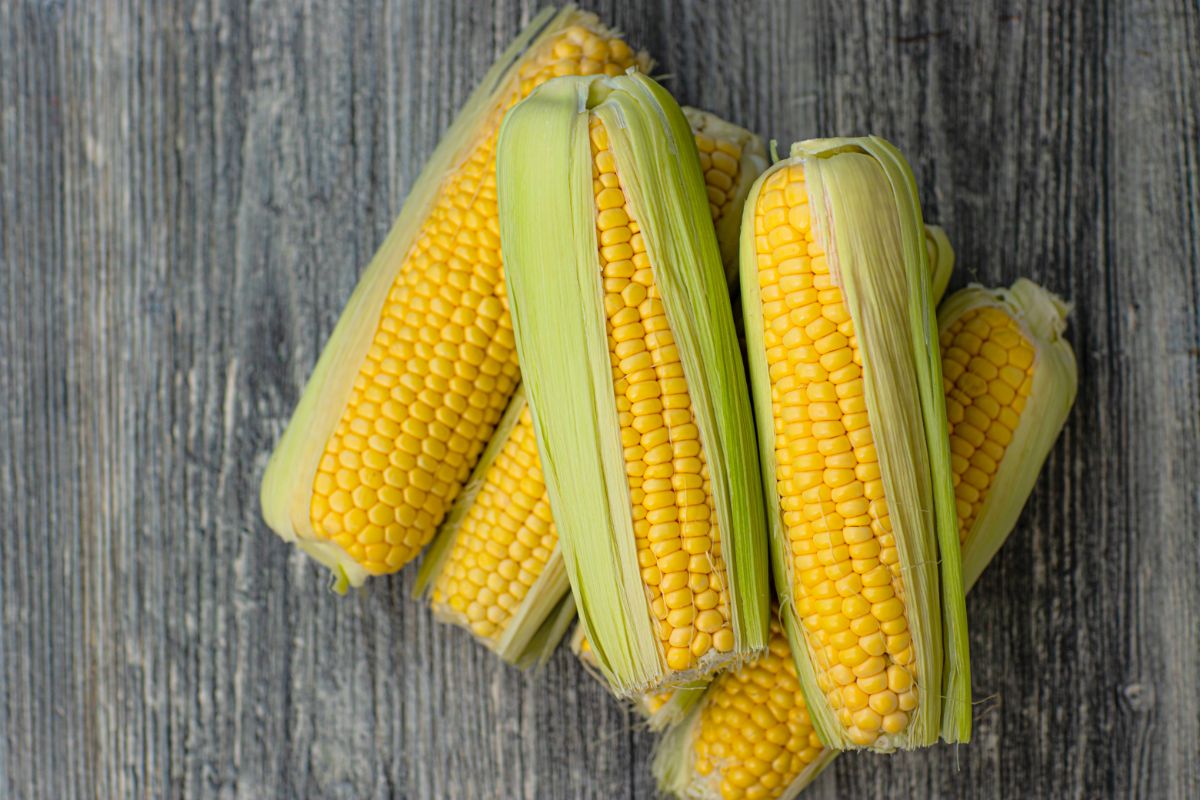The grass family is much larger than many people think.

Of the thousands of different types and species of grass that exist in our world, only a select few which have been cultivated as cereals are of interest to the majority of us like rice, barley and indeed, corn.
Yes, corn is a very important type of grass but there’s so much more to it than this.
Join us as we explore all the areas surrounding corn and its history.
What Is Corn?
Corn (maize) is an annual grain plant native to Mexico. It has become one of the most widely grown crops in the world over the past century.
In 2017, global production was about 442 million metric tons.
The word maize comes from Nahuatl, the Aztec language. Maize means “food” or “eaten food”.
The first domesticated form of corn was teosinte, also called Zea mays mexicana.
This wild ancestor of modern corn was discovered in 1887 by botanist Francisco Boza near Veracruz, Mexico.
It was named after the Spanish word for wheat, teosinte.
The earliest evidence of cultivation of corn dates back at least 7,000 years ago.
Archaeological excavations in southern Mexico have found evidence of early cultures growing corn.
Today, corn is used to feed animals and humans.
It can be eaten directly, made into breads, tortillas, chips, polenta, grits, popcorn, tamales, tacos, nachos, burritos, empanadas, tortilla española, churros, and more.
So, Corn Is A Grass?
Corn belongs to the grass family.
Grasses are plants with long stems and leaves that grow in clumps.
They include many familiar plants such as lawn grasses, bamboos, sedges, rushes, fescues and others.
Grass is a general term that includes many kinds of plants. Some grasses are edible while others are not.
Interestingly, some grasses do not produce seeds. Instead they reproduce vegetatively through their roots.
There are many types of grasses. Some examples of grasses include:
- Bambusa vulgaris – bamboo
- Brachypodium distachyon – false oat
- Bromus erectus – bentgrass
- Calamagrostis arundinacea – reed canary grass
- Chloris virgata – green flag
- Cynodon dactylon – Bermuda grass
What Are Some Native North American Grasses?
There are a few native North American grass types that you’ve likely heard of. These include:
Northern Wild Rice
Wild Rice is a large genus of aquatic grasses native to North America. There are several varieties of wild rice including black, blue, red, and yellow.
All are members of the tribe Oryzoideae.
It grows along rivers, lakes, ponds, marshes and swamps. It is harvested during the fall when the stalks turn golden brown.
Native Americans use wild rice as a staple food source. It is often boiled, fried, steamed, or dried.
Indian Rice Grass
Indian rice grass is a perennial grass that grows up to 3 feet tall. Its rhizomes store energy for the next year’s growth.
This grass is commonly found throughout the eastern United States.
The most common variety is Zizania palustris. Common names for Indian rice grass include:
- Prairie Grass
- Sideoats grama
- Big bluestem
- Buffalo grass
How Does Corn Grow?
Corn grows best in warm weather with lots of water and fertile soil. It needs full sun and well-drained soil.
It is planted in rows spaced 30 inches apart. Seedlings emerge in 10 days.
The plants grow rapidly, reaching maturity in 60-70 days.
Corn seeds germinate when they come into contact with moisture. They need light to help them photosynthesize, so they should not be sown too deeply.
Seeds must be kept moist until planting time. When planting, corn seedlings should be covered with 1/2 inch of fine sand.
Corn requires a long growing season. Planting should occur between March and May. Harvest begins in late July and continues through October.
Seedlings may be harvested at any stage of growth. However, the ears will continue to develop and mature throughout the summer.
Therefore, harvesting should begin before the tassel appears.
Harvested ears should be dried thoroughly before storing. If stored correctly, corn kernels will remain edible for up to two years.
Why Do We Eat Corn?
There are several reasons why we eat corn:
It Provides Energy
Corn contains carbohydrates and protein.
It Provides Vitamins And Minerals
Corn is rich in vitamin B1, B6, C, D, E, K, folate, iron, magnesium, phosphorus, potassium, zinc, calcium, copper, manganese, selenium, and thiamine.
It Provides Fiber
Fiber helps you feel fuller longer.
It Provides Healthy Fats
Corn oil is high in monounsaturated fatty acids, which lower cholesterol levels.
It Provides Antioxidants
Antioxidants protect your body against free radicals, which cause damage to cells and DNA. Free radicals are produced during normal metabolism.
It Provides Starch
Starch makes it easier to digest food, especially if you’re eating corn on the cob.
It Provides Protein
Protein helps build muscles and bones.
It Provides Dietary Fiber
Dietary fiber aids digestion and promotes regularity.
What Are Some Uses For Corn?
Corn has many uses besides just being an ingredient in our favorite foods. Here’s what some people use corn for:
Corn Is Used To Make Alcohol
Many countries around the world make alcohol from corn. In fact, China produces about half of the world’s total production.
Other countries that produce alcohol include Canada, France, Germany, Japan, Russia, Spain, South Africa, Sweden, Switzerland, and the United States.
Corn Is Used As Fuel
In the U.S., ethanol is added to gasoline as a renewable energy source. Ethanol reduces harmful emissions and improves fuel efficiency.
In addition, ethanol can be used to power vehicles, generators, or heaters.
Corn Is Used To Feed Livestock
The most common livestock fed with corn include cattle, chickens, pigs, sheep, goats, horses, and turkeys.
Corn Is Used In Cosmetics
Cosmetic companies use corn to create products such as lotions, shampoos, lipsticks, deodorant, eye makeup and more.
Corn Is Used To Treat Illnesses
People who have allergies to certain plants often find relief by using corn.
The Bottom Line
Corn is an important member of the grass family and is one of several native North American grasses.
Once grown and harvested, the “fruits” can be known as vegetables, wholegrain or fruit. Quite a complex entity!
- Pull Sprouts: 1 Potato Peel, 200 Plants - July 7, 2022
- Creeping Thyme: Flowering Herb And Ground Cover - July 7, 2022
- East meets Midwest in the garden of Linda Brazill and Mark Golbach, Part 1 - July 7, 2022







